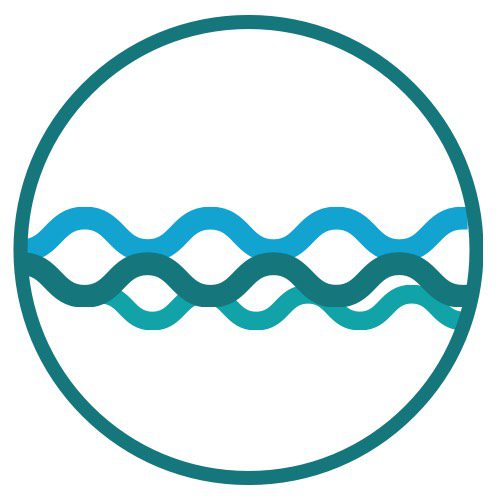Which Organizations Should be Involved in Communications Planning?
Communications is often used synonymously with the term ‘marketing’, so, understandably, communications planning is often spearheaded and managed by the marketing team of an organization. We think of communications as being actually the central backbone of an organization – the spinal cord, so to speak, that connects the internal strategic operations and the external expression and messaging of an organization.
In reality, all organizations should have some sort of communications planning strategy, regardless of whether or not they have a full-fledged marketing team. Let’s dive into why.
What is Communications Planning?
Communication plans define what information should be communicated and to whom, when the information will be delivered, where or by what method the communication will be shared, and how the information will be tracked for effectiveness and impact.
Communication plans can be internal (ie; within a team or organization about a specific strategic operational change, direction or policy adoption); external (ie; about a program, offering, message for an external audience); or a hybrid of the two.
What are the Benefits of Communications Planning?
An effective communications plan can bring an organization much more success than individual outreach, if not successfully and with the right amount of leadership input. A good communication plan will help an organization:
- Clarify goals and objectives, pairing it with an effective roadmap. By defining where you want to go and where you are, you can easily build a road to get there.
- Define the interconnection and relationship between the messages you are trying to convey, your mission/vision, and the audience you’re trying to reach.
- Test the waters with different types of outreach. A good communication plan allows you to do outreach in varied ways, and test and analyze the effectiveness of the results. This way, you can work to identify the types of outreach that work most effectively for the audience you are targeting.
- Clarify roles among the team. Marketing is broad and likely your team is good at different things. By defining roles and assigning responsibilities, team members can have more ownership of their pieces of the pie and not feel they’re alone in distributing the information to a wide audience.
- Find creative, diverse and collaborative solutions. Bringing in many voices and perspectives, from the marketing side but also from the leadership and program teams, will allow you to integrate diverse perspectives and ideas into your communication plan.
- Incorporate feedback from external stakeholders by asking for feedback on your plan (or on the products your plan produces) helps you adjust your plan to be as impactful as possible. After proper evaluation and input, you can create and implement new approaches to improve your plan.
So, Let’s Break Down How to Make a Communications Plan
We’ve broken it down into a few easy steps; if after reading this it’s still overwhelming, there’s a lot of great coaching and consulting resources out there to help you get the process down and codified internally. Communication planning is quite cyclical – once you plan, implement and analyze, you’ll go back through the process again and again to adjust and improve. Once you get the rhythm down, it’s much easier to rinse and repeat!
- Audit your current approach and resources. You’re likely not starting with nothing, as you probably already have some marketing and/or operations support in place. It’s important you look at what’s working and what isn’t, as well as the resources you’ve created, to understand where you are.
- Set goals. It’s important to define where you want to go, in order to get there!
- Identify your target audience(s)/client avatar. Based on your goals, your audience might change. You can break down your audience into a few ‘client avatars’, by defining the WHO are they/their demographics, WHAT are they looking for, and WHERE do they find their information, of each of the audiences you’ll be targeting.
- Identify your platforms of communication. The WHERE of where your audience finds their information will be the key in helping you identify which platforms will be most effective in outreach. Mix it up to try different methods to see what’s most effective.
- Determine communication frequency and timeline. This will depend greatly on your goals and your capacity. Make this realistic for your team, and not overwhelming for your target audience.
- Assign roles for distribution. Determine who will be ultimately responsible for delivering each type of message. Play to people’s strengths and desires; team members will often do better with communications assignments that are aligned with their interests and expertise.
- Document your plan! You only have a plan if you write it down. We recommend recording your plan in a digital format so it can be easily shared and updated; it should be a living document that can be edited with input.
- Share your plan and distribute existing resources. Distribute your plan and any existing resources you’ve created for distribution to team members with specific instructions on how to use it. For event planning for example, HERE’S a useful Marketing Language document template we like to use with our clients to get consistent on language posted through different platforms.
Let us help you create your communications flow!
Companies enlist the services of consultants like Triple Creeks for various crucial reasons. The best consultants are those that have well-rounded experience and the ability to take things off your plate, providing you with someone you can trust to make decisions and alleviate some of the natural ‘decision fatigue’ that comes with guiding an organization. Triple Creeks stands out because we don’t just advise you on what to do, but we also help you implement our recommendations, so you can see the change unfold for yourself. We often take on the boring, behind-the-scenes tasks that are essential to efficient systems design, but beyond the capacity of your current team. So, what are you waiting for? Dive into the flow with us!


